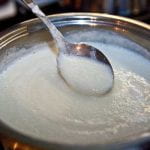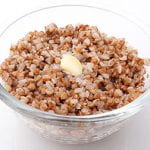Russian food: Yes, give me another portion
PRECURSOR: I do not talk about Russian typical food. You know what I mean: borscht (beet soup), blinchiki (pancakes/crepes), olivier salad (it’s a mess to describe), katleti (meatballs), etc etc. I’m not talking about kitsch – I’m talking about experiences.
Food is so important in Russia – so so so important, as any food is pertinent to any culture.
While most of Russia has certain staple “Russian” food, St. Petersburg has a special situation. Most of SPb residents lived through the Siege of Leningrad during World War 2. Older houses still have marks of the siege, as do its older residents. After living through starvation, famine, and danger, food is ingrained as “you must eat when there is food.” Like in most of Russia, throwing out food is considered wasteful and is looked down upon. Dishes must be turned in clean!
This lack of stability with food and a tradition of agriculture (remember that sustaining agriculture was the main way of life for most Russians until the 1917 revolution) brought upon the cultural phenomenon of the dacha. The best way I can describe it is something between a summer home, a cottage, and a farm. Most cityfolk who have money to spare invest in a family dacha (if one does not exist already) for countryside relaxation, more space that isn’t a small sad apartment, or for the event of needed food. Gardens occupy most of the space of dachas, with summer strawberries, leafy cabbages, rows of onions sprouting from the ground. I remember spending most of my childhood’s summers at my grandparents’ dacha in the countryside around Moscow, fooling around with my cousins and getting underfoot the adults who were trying to pull weeds or gather berries for the kids or something else (agriculture is so much work?? I realized when I grew up enough to help out). Not everyone uses dachas so much for gardening, but rather as a second flower-covered home away from the city’s business scuffle and polluted air. My host mom sometimes eloped to her dacha, which had more of this countryside cottage feel rather than my grandparents’ dacha. However, even then, she returned from her dacha with a new assortment of forest mushrooms, potatoes, dill. She created whole meals from what she gathered outside that day, which to this day remain some of my favorite things I’ve eaten in my life.
That food is food that, for me, tastes like home, summers with grandparents, coming home after school to see my parents in the kitchen with an afterschool snack. Dad’s weird potatoes on the saucepan. Mom’s Russian-style one-sided sandwiches with Russian-store bought salami. And now, digging through my host mom’s refrigerator after my 8pm class.
Speaking of different food from different stores: Russian food has a few concretely different ingredients. Some examples are: buckwheat, dill, certain types of kasha that I have yet to find in the States. In fact, the whole concept of kasha doesn’t exist in the States, when it’s basically the staple Russian breakfast food. It’s basically different grains that are then boiled into a porridge. Except each grain is special in its own right. Here’s what it looks like (not my pics – I’m so used to this food I haven’t taken any pics, pretty much!):
- Mannaya kasha
- Grechnivaya kasha (buckwheat)
- Gerkules (oatmeal!)
With Russia’s different geographical location and different history with other cultures, there’s a different understanding of what counts as ~foreign~ food. Georgian food is very available (like the country Georgia south of Russia – they had a small war there in 2008? This isn’t United States of America Georgia) with all its cultural food touchstones like manti (kinda-dumpling) and hachepuri (really good cheese on really good bread). There was a sushi craze a couple years ago, with rows of cheap sushi shops rolling out in neighborhood malls. Kebabs and shawarma are looked down upon by older generations but are considered the best 3am food on Saturday for the younger population. Interesting note: Shawarma is pronounced differently in SPb VS Moscow. SPb prefers “sha-VER-ma” while Moscow says “sha-oor-MA.” “Coffee to go” is new and loved and very available. Pizza feels wrong. It’s just done…. Differently. More Russian.
In general: Great food. Warm, feels like home, feels like a hug. I know I’ll miss the accessibility of borsch and pelmeni, but because of the large Russian diaspora in the United States, I can still eat it if I choose to trek out to a larger town and its collection of Russian stores (and Georgian restaurants 😉
If you’re curious about other Russian food in the States, maybe not from the diaspora (which tends to run on the kitschy side), check out the notable current Russian chain Teremok! It just opened a store in New York City. I haven’t been there myself, but my PR class spent a lot of time talking about how Teremok’s PR strategy is basically nonexistent, but they still are the leading fast-casual restaurant of Russia because of simply how good their blinchiki are. They are currently in a marketplace fight with Chainaya Lozhka (Teaspoon) for the blinchiki/teashop portion of the market (and according to our class, they’re winning!). I can testify for their good stuff – there’s a kiosk on the square outside of Smolny and students usually grab a bite there after class and they haven’t disappointed since.
Take a look, stop by – modern Russian food is really good and deserves some love!!


